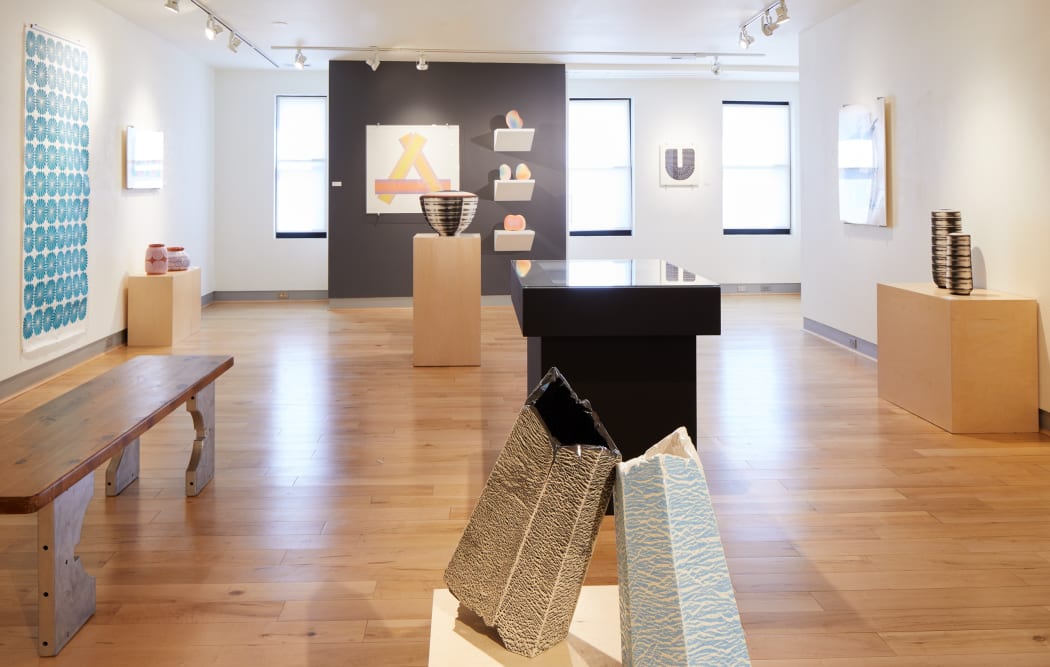
Spectrum is a curatorial collaboration between Gallery Director Jordan Eddy and Print Curator Kylee Aragon Wallis. Before she came to the gallery, Aragon Wallis was the gallery manager at Tamarind Institute, a pioneering lithography center in Albuquerque, New Mexico. Eddy and Aragon Wallis discuss the initial inspiration for the vibrant print and ceramics display here, and their conversation continues in an ongoing blog series.
Jordan Eddy: Spring has sprung! How are you feeling about the new season?
Kylee Aragon Wallis: I feel more optimistic about spring this year than I’ve ever felt. This past year was so intense, and the winter was really heavy. I have a newfound appreciation for spring, despite my allergies.
JE: Exactly! I feel so much gratitude for existing in the world—and I also have the sniffles. Spring was our inspiration for this display of prints and ceramics. The initial spark was a printmaking process called blend roll. What is blend roll?
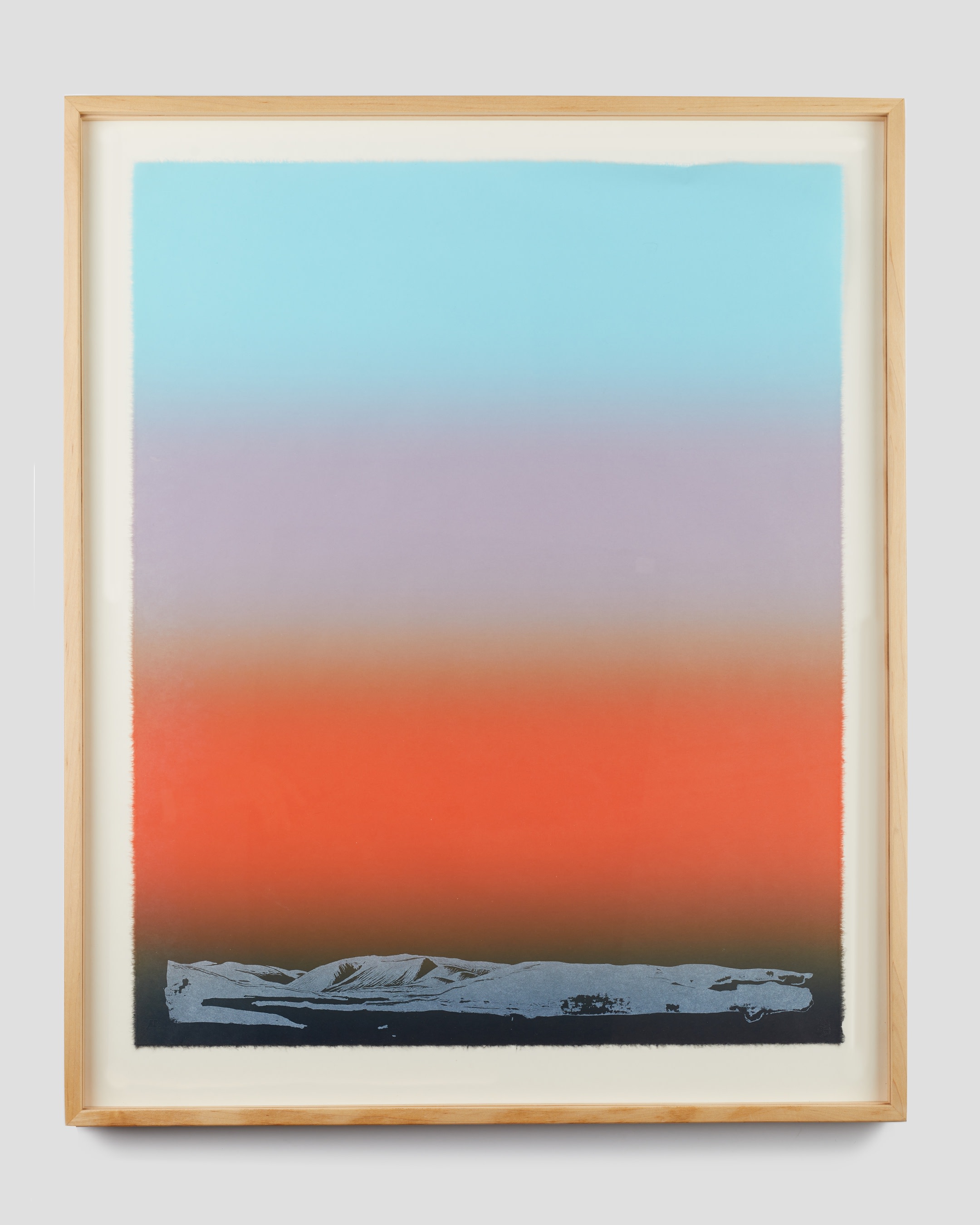
Outi Pieski, Čáppa muđot Áilegas / Sweet-faced Mountain Nuvvos Áilegas, 2018, Five-color lithograph, 26 3/4 x 21 1/2 in
KAW: Blend roll, also known as rainbow roll, is a tonal blending technique. You lay different colors down in stripes, and then blend it with your roller. You have to be really careful, because different colors of inks have varying viscosities. The colors can shift if you’re not really paying attention, and that can cause inconsistencies within the print edition.
JE: The payoff is a stunning color gradient that feels atmospheric and spectral. Who pioneered this luscious but technically maddening method?
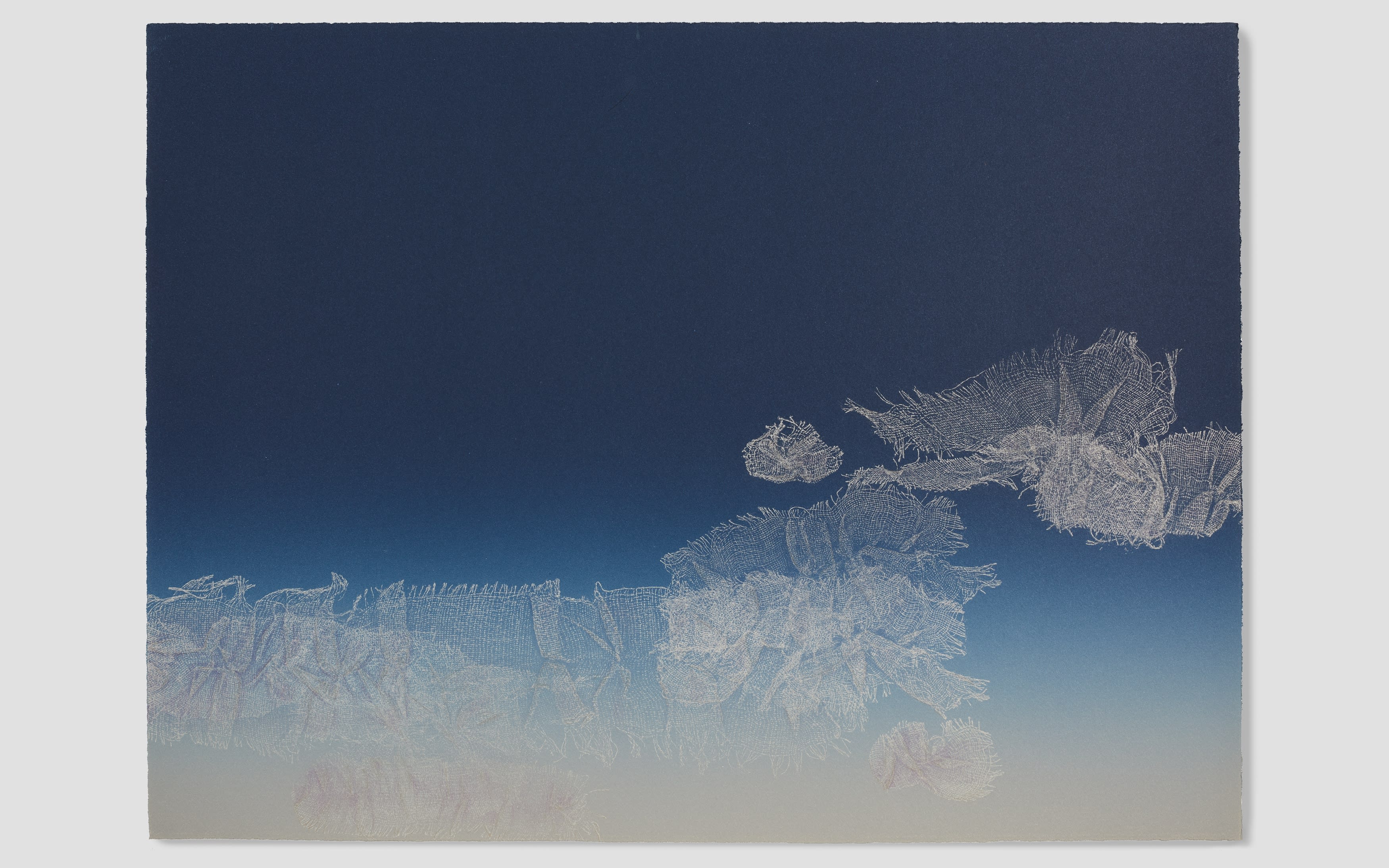
Gail Gash Taylor, Dawn Suite 4, 1983, Color Lithograph, 15 x 20 in
KAW: Blend rolling was originally used for poster production, because it was a fast way to layer and mix colors. For example, Henri de Toulouse-Lautrec worked with a blend roll in the 19th century to create posters for Parisian cultural institutions like the Moulin Rouge. In the 1970s, Garo Antreasian brought back the technique. He’s credited for popularizing it again. Antreasian made it popular, and the Tamarind Institute in Albuquerque perfected it through the years.
JE: So there’s a thread of New Mexico history here?
KAW: Absolutely. Antreasian had seen a print entitled Jane Avril by Toulouse-Lautrec, and he was really puzzled at first by the color gradient that Toulouse-Lautrec had achieved. This print displayed a smooth tonal blend of blue and yellow in its depiction of a snake, an element that had intrigued Antreasian for many years. He became really fascinated with it, and started doing blend roll at Tamarind. A lot of other people started adopting it in the 1980s. I know R.C. Gorman started using blend rolls to depict the sky in his prints.
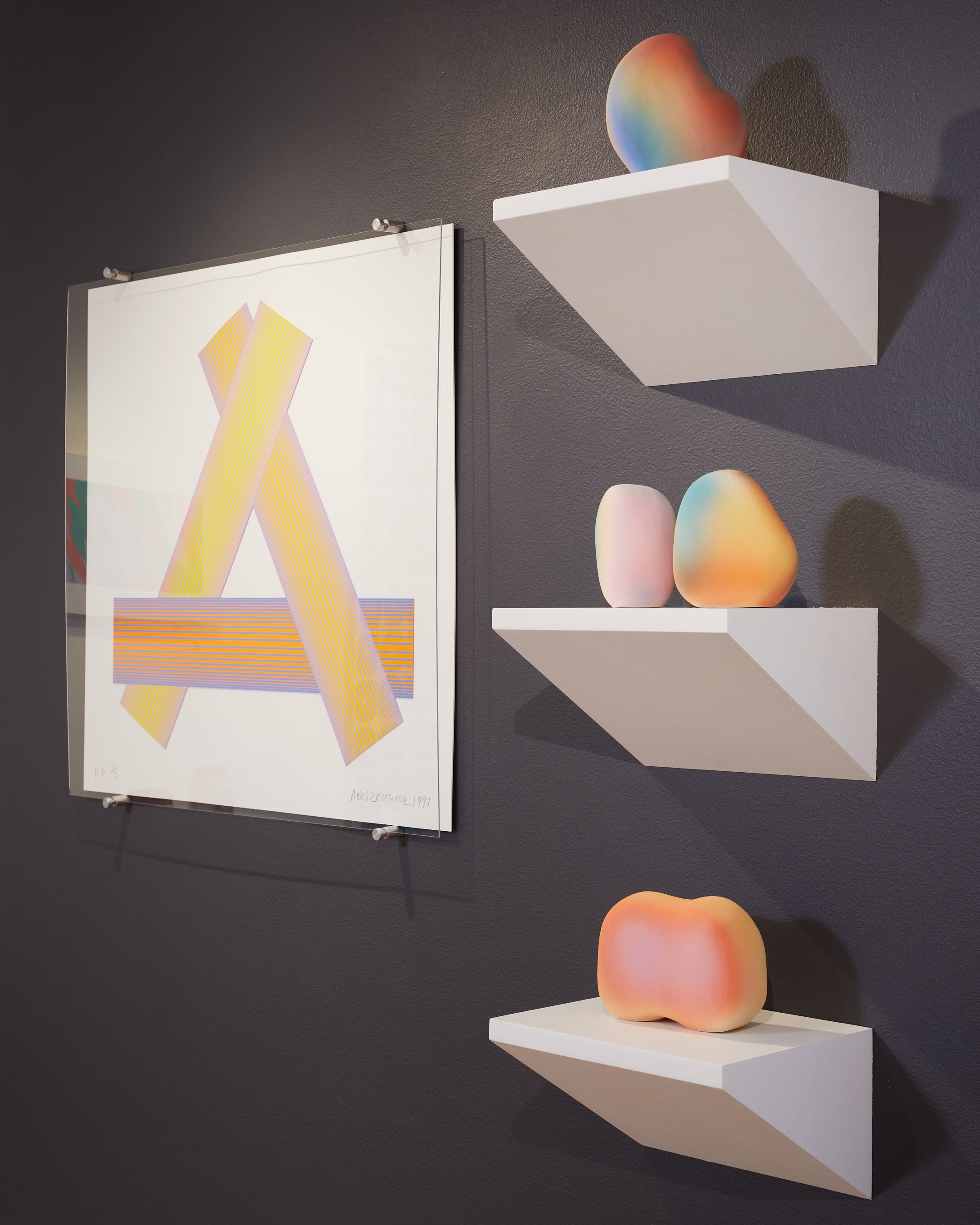
Spectrum installation view. Artwork by Richard Anuszkiewicz (l) & Angel Oloshove.
JE: So with the springy spectrums of blend roll as an inspiration, we hunted down prints and ceramics that shimmer with color. The artists in this display are often pulling their palettes from the landscape and sky. Whether they’re using ink or glaze, they are layering to produce spectacular lighting effects.
KAW: They’re really thinking ahead about the colors they’re trying to achieve. It looks like a happy accident at the end, but there’s a lot of thought and work that goes into it.
JE: One thing we’re always trying to emphasize at the gallery is the interdisciplinary spirit of contemporary creative practice. There are some interesting connections between printmaking and ceramics, and they have something to do with craft. What are some bridges between the disciplines that you’ve observed?

Spectrum installation view.
KAW: Both prints and ceramics are sometimes cast aside or not seen as high art forms. It’s a major educational effort to put across how insanely talented these artists are. They’ve studied their craft and really perfected it. I think ceramicists and printmakers can have some difficulty explaining their art to people. It’s not as straightforward as painting in some ways.
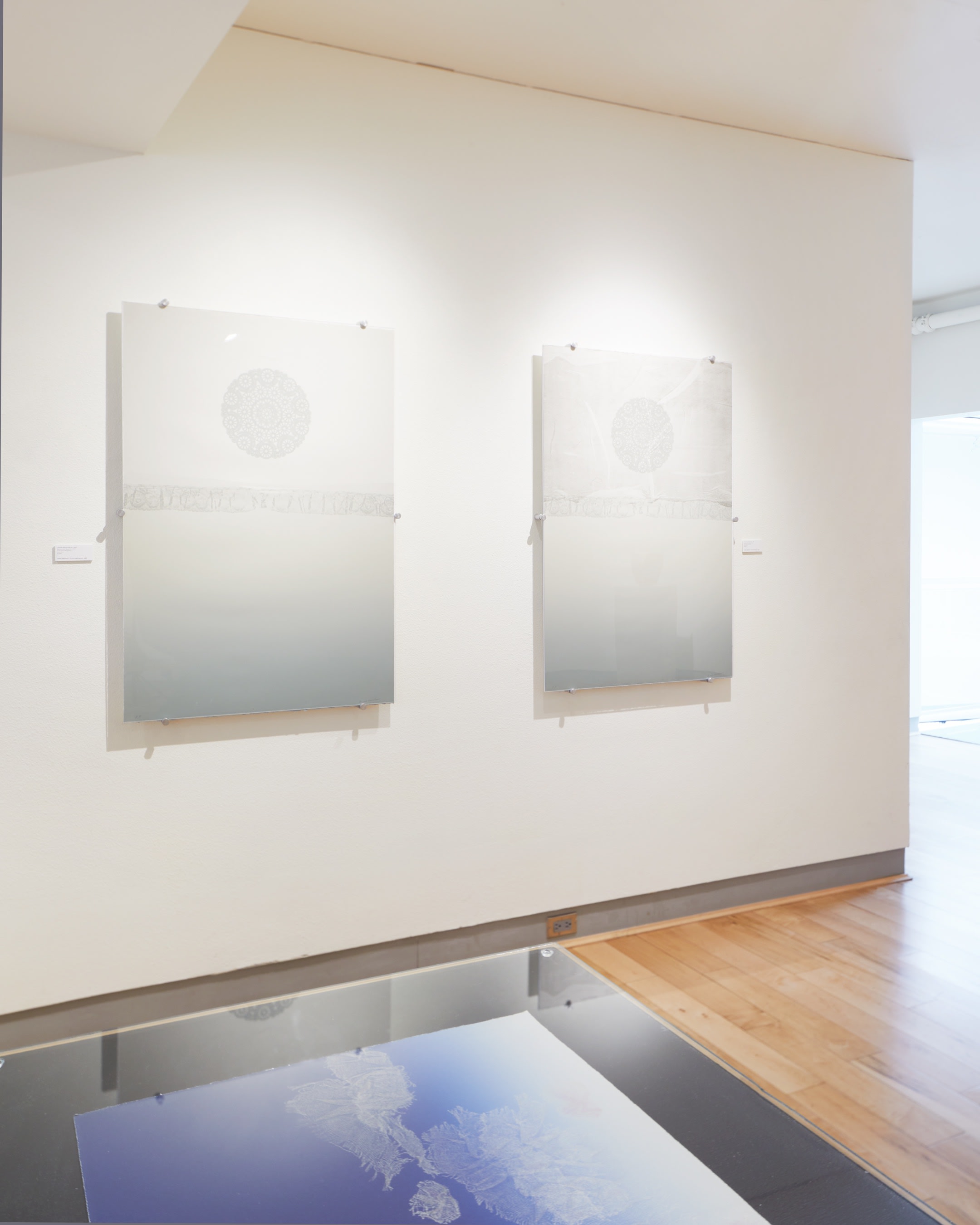
Spectrum installation view. Artwork by Louise Nevelson (top) & Gail Gash Taylor.
JE: Both disciplines also necessitate collaboration. You might imagine a painter alone in their studio with a brush and palette. Ceramics or printing studios are often very different environments, largely because of the high costs of getting started. Kilns and printing presses are incredibly expensive, so artists are forced to band together to clear that bar and get moving.
KAW: In printmaking, collaboration is built in. The printer and the artist have to work together. For so long, printers were seen as artisans rather than artists. They were kind of seen in this second class. The truth is, they are highly skilled artists.
JE: If you are an artist and you want to pull off a perfect blend roll, there’s almost no way to do it without working with a master printer.
KAW: You’ve got to have a friend! I’ve seen this community in craft that is like the community I’ve seen in print. All the ceramicists know each other, all the jewelers know each other, all the printmakers know each other, and they really have each other’s backs and feel very comfortable giving tricks of the trade. “Oh, I’ve done this, you should try this.” Craftspeople have had to really work to get acknowledged in the same way that printmakers have, and I think there’s some solidarity that we’re seeing right now.
JE: Speaking of common experiences, one preoccupation for all of these artists is light. Whether they’re using ink or glaze, they are layering to produce spectacular lighting effects and color gradients. Many of the artists also have ties to this region, which turns out a lot of color theorists.
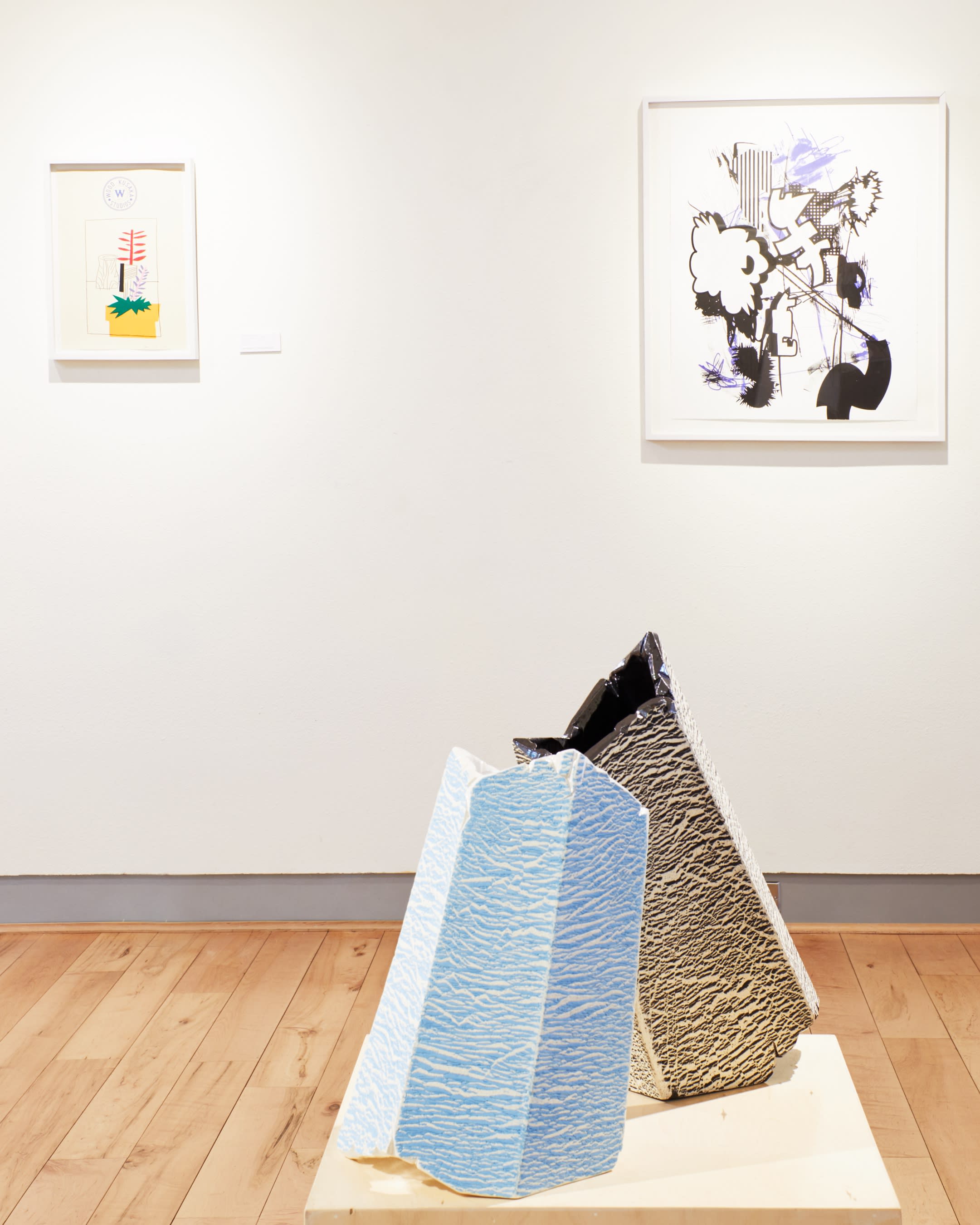
Spectrum installation view.
KAW: I look at the colors of New Mexico and still get emotional, and I grew up in Albuquerque. So when artists work here, those colors are irresistible. I’ve worked with artists at Tamarind, and they’ll say, “I want that color, the way that the sky looks right now.”
JE: They want to distill it directly from the sky or the land. It really makes me think about mixing colors as this alchemical process. You’re taking one thing, and you’re transferring it directly into another form. It’s like magic!
READ MORE
Part 2: Angel Oloshove & Richard Anuszkiewicz
Part 3: Michael Dickey & Louise Nevelson



